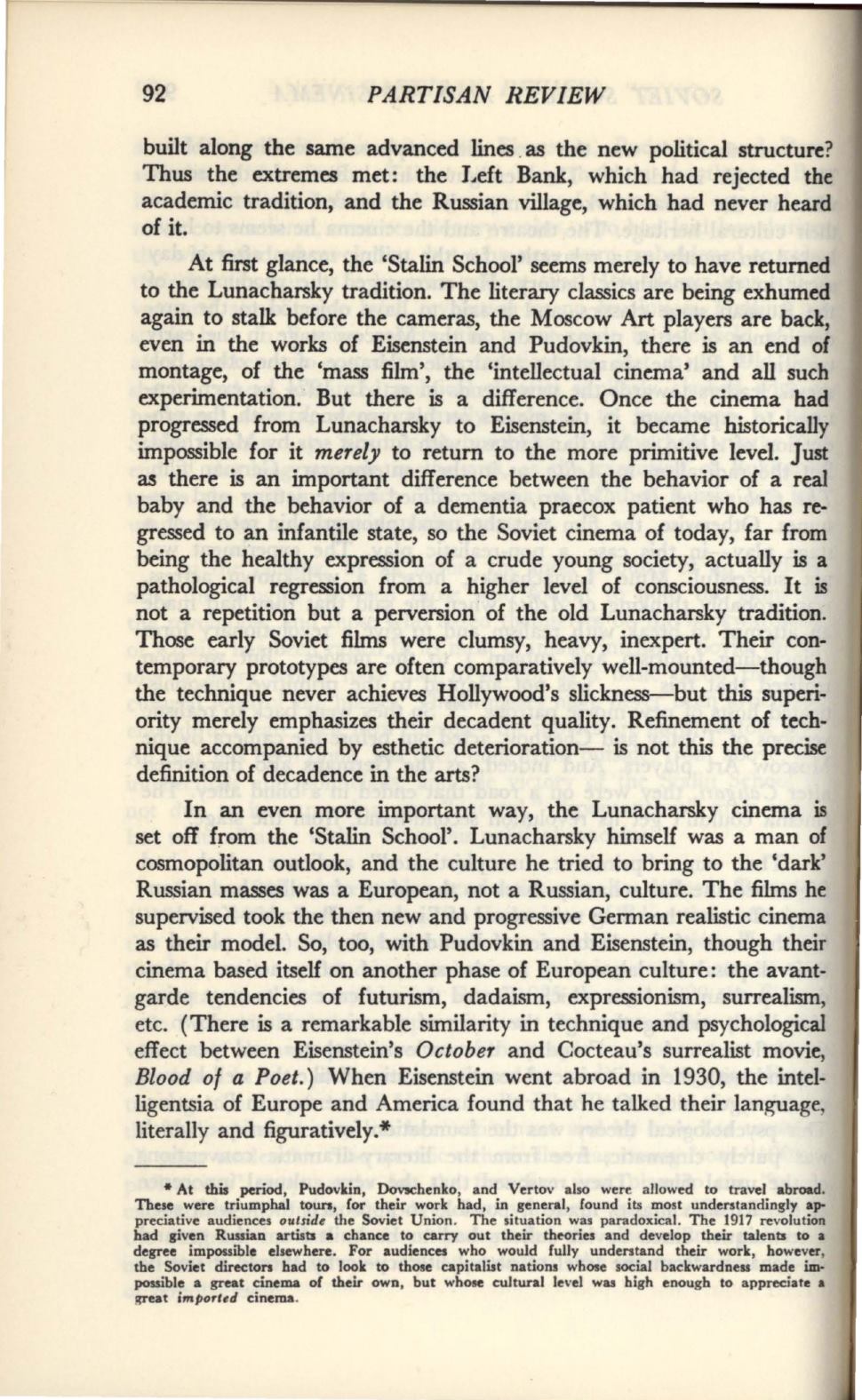
92
PARTISAN REVIEW
built along the same advanced lines .as the new political structure?
Thus the extremes met: the Left Bank, which had rejected the
academic tradition, and the Russian village, which had never heard
of it.
At first glance,
the
'Stalin School' seems merely to have returned
to the Lunacharsky tradition. The literary classics are being exhumed
again to stalk before the cameras,
the
Moscow
Art
players are back,
even in the works of Eisenstein and Pudovkin, there is an end of
montage, of the 'mass film', the 'intellectual cinema' and all such
experimentation. But there is a difference. Once the cinema had
progressed from Lunacharsky to Eisenstein, it became historically
impossible for it
merely
to return to the more primitive level. Just
as there is an important difference between the behavior of a real
baby and the behavior of a dementia praecox patient who has re–
gressed to an infantile state, so
the
Soviet cinema of today, far from
being the healthy expression of a crude young society, actually is a
pathological regression from a higher level of consciousness. It
is
not a repetition but a perversion of the old Lunacharsky tradition.
Those early Soviet films were clumsy, heavy, inexpert. Their con–
temporary prototypes are often comparatively well-mounted-though
the technique never achieves Hollywood's slickness-but this superi–
ority merely emphasizes their decadent quality. Refinement of tech–
nique accompanied by esthetic deterioration- is not this the precise
definition of decadence in the
arts?
In an even more important way, the Lunacharsky cinema
is
set off from the 'Stalin School'. Lunacharsky himself was a man of
cosmopolitan outlook, and the culture he tried to bring to the 'dark'
Russian masses was a European, not a Russian, culture. The films he
supervised took the then new and progressive German realistic cinema
as their model. So, too, with Pudovkin and Eisenstein, though their
cinema based itself on another phase of European culture: the avant–
garde tendencies of futurism, dadaism, expressionism, surrealism,
etc. (There is a remarkable similarity in technique and psychological
effect between Eisenstein's
October
and Cocteau's surrealist movie,
Blood of a Poet.)
When Eisenstein went abroad in 1930, the intel–
ligentsia of Europe and America found that he talked their language,
literally and figuratively.*
• At
this
period, Pudovkin, Dovschenko, and Vertov also were allowed to travel abroad.
These were triumphal toun, for their work had, in general, found its most understandingly
&JI'
preciative audiences
outside
the Soviet Union. The situation was paradoxical. The 1917 revolution
had given Russian artists a chance to carry out their theories and develop their talents to a
degree impossible elsewhere. For audiences who would fully understand their work, however,
tbe Soviet directors had to look to those capitalist nations whose social backwardness made
im–
possible a great cinema of their own, but whose cultural le,•el was high enough to appreciate a
great
imported
cinema.


